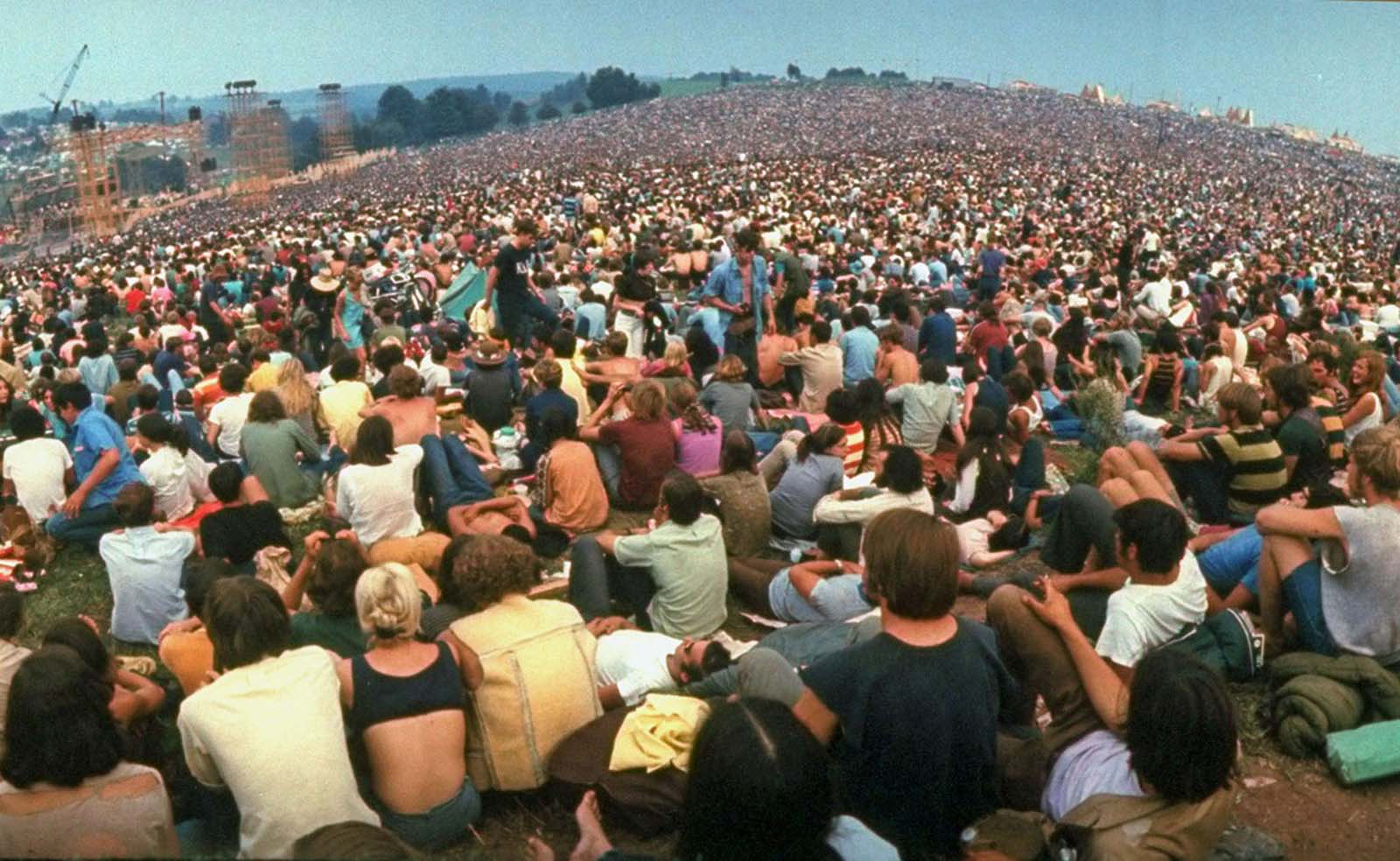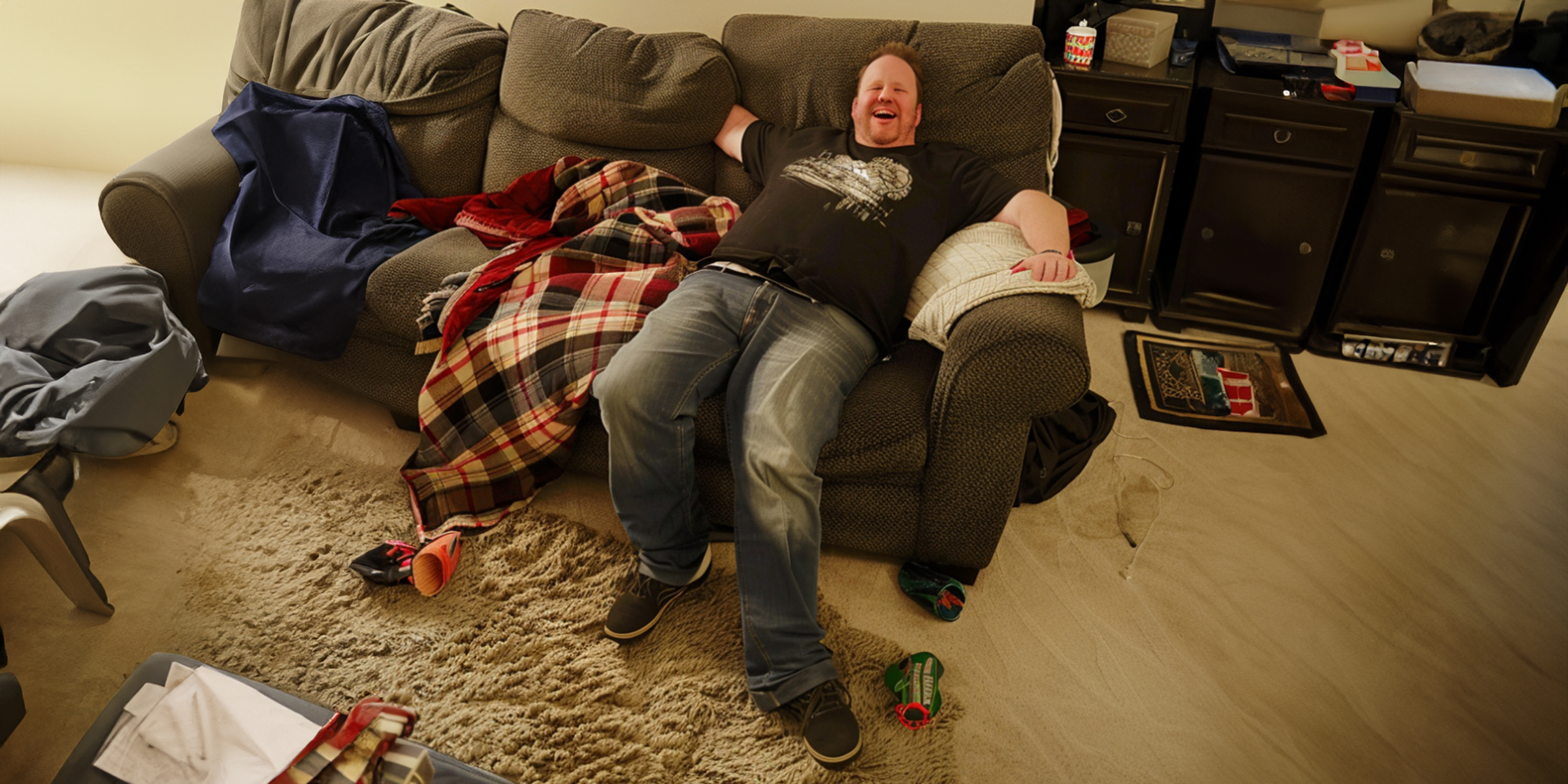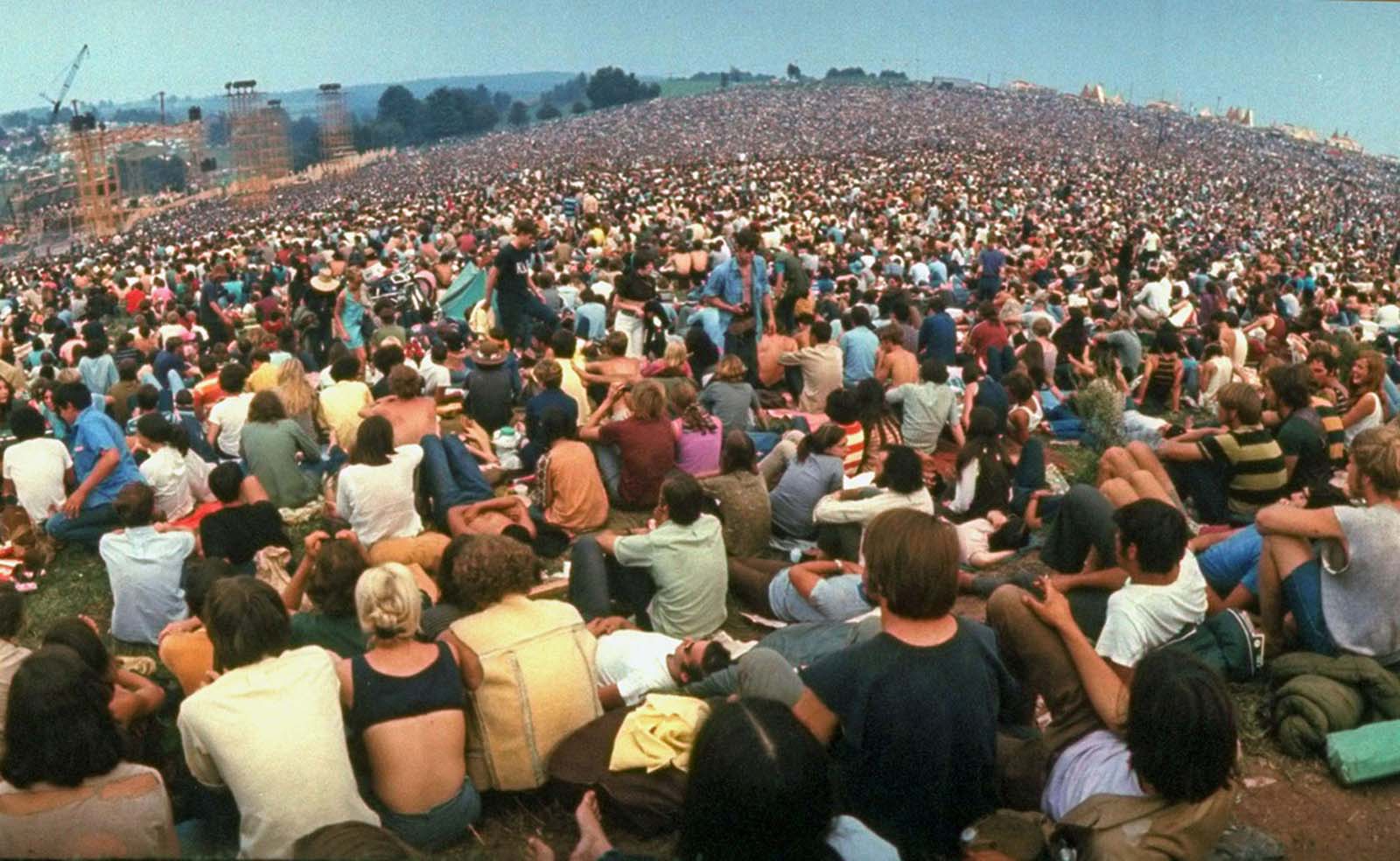
A wide-angle view of the huge crowd facing the distant stage during the Woodstock Music & Art Fair in August 1969.
In 1969, more than 400,000 people descended on Bethel, New York, headed to a dairy farm owned by Max and Miriam Yasgur, where the Woodstock Music & Art Fair was being held.
The epic event became synonymous with the counterculture movement of the 1960s.
Woodstock was a success, but the massive concert didn’t come off without a hitch: Last-minute venue changes, bad weather, and the hordes of attendees caused major headaches.
Still, despite—or because of—a lot of sex, drugs, rock ‘n’ roll, and rain, Woodstock earned its majestic place in pop culture history.
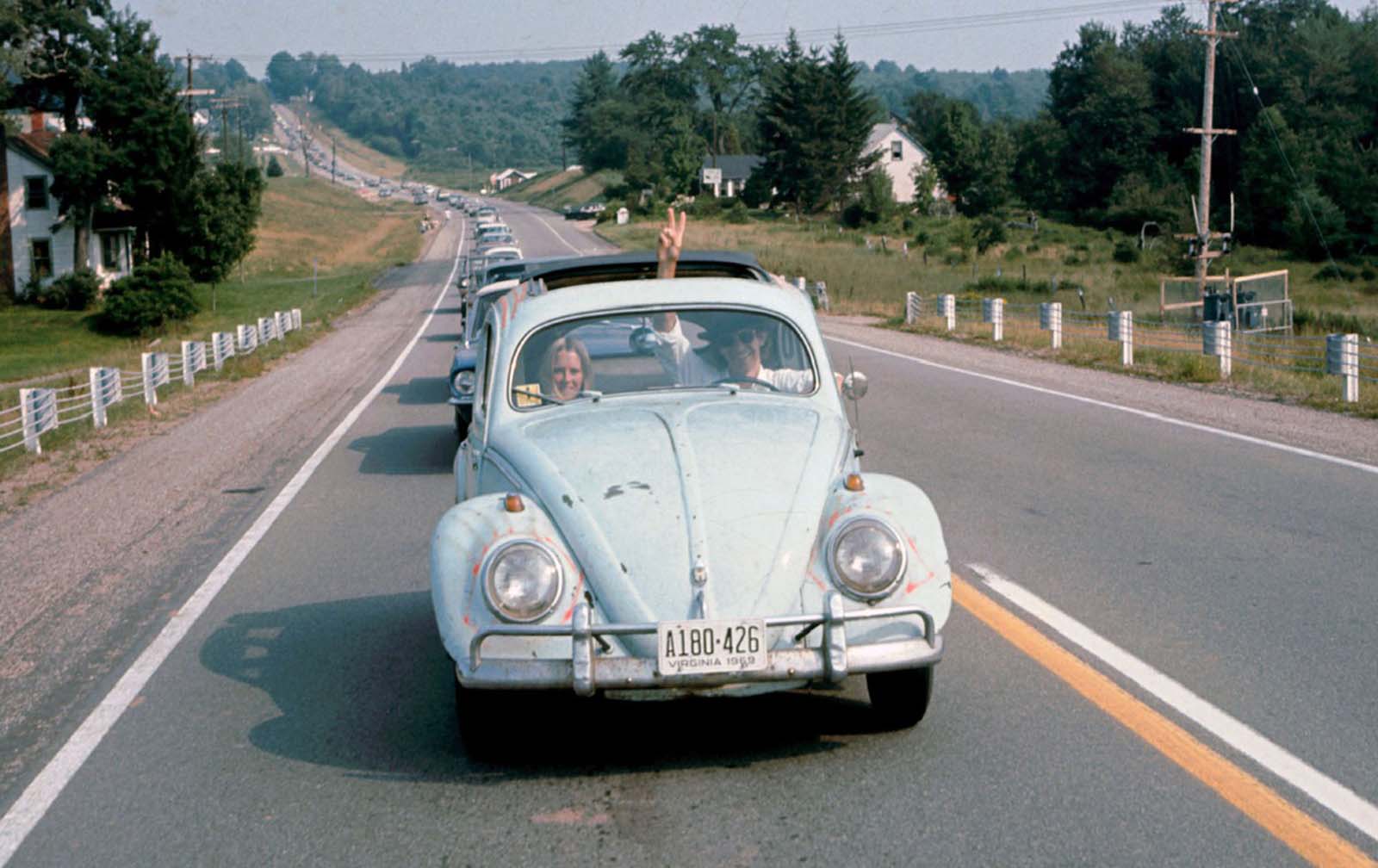
A man drives a Volkswagen Beetle ahead of a long line of cars on the way to the Woodstock Music & Art Fair while flashing a peace sign through the sunroof of the car, in Bethel, New York, in August 1969.
The Woodstock Music Festival was the brainchild of four men, all age 27 or younger, looking for an investment opportunity: John Roberts, Joel Rosenman, Artie Kornfeld, and Michael Lang.
The four men formed Woodstock Ventures, Inc., and decided to host a music festival.
After many failed attempts to find a location, finally, 49-year-old dairy farmer Max Yasgur offered to rent them part of his land in the White Lake area of Bethel, New York, surrounded by the verdant Catskill Mountains.
With the concert just a month away, the four frantic partners jumped at the opportunity and paid his asking price.
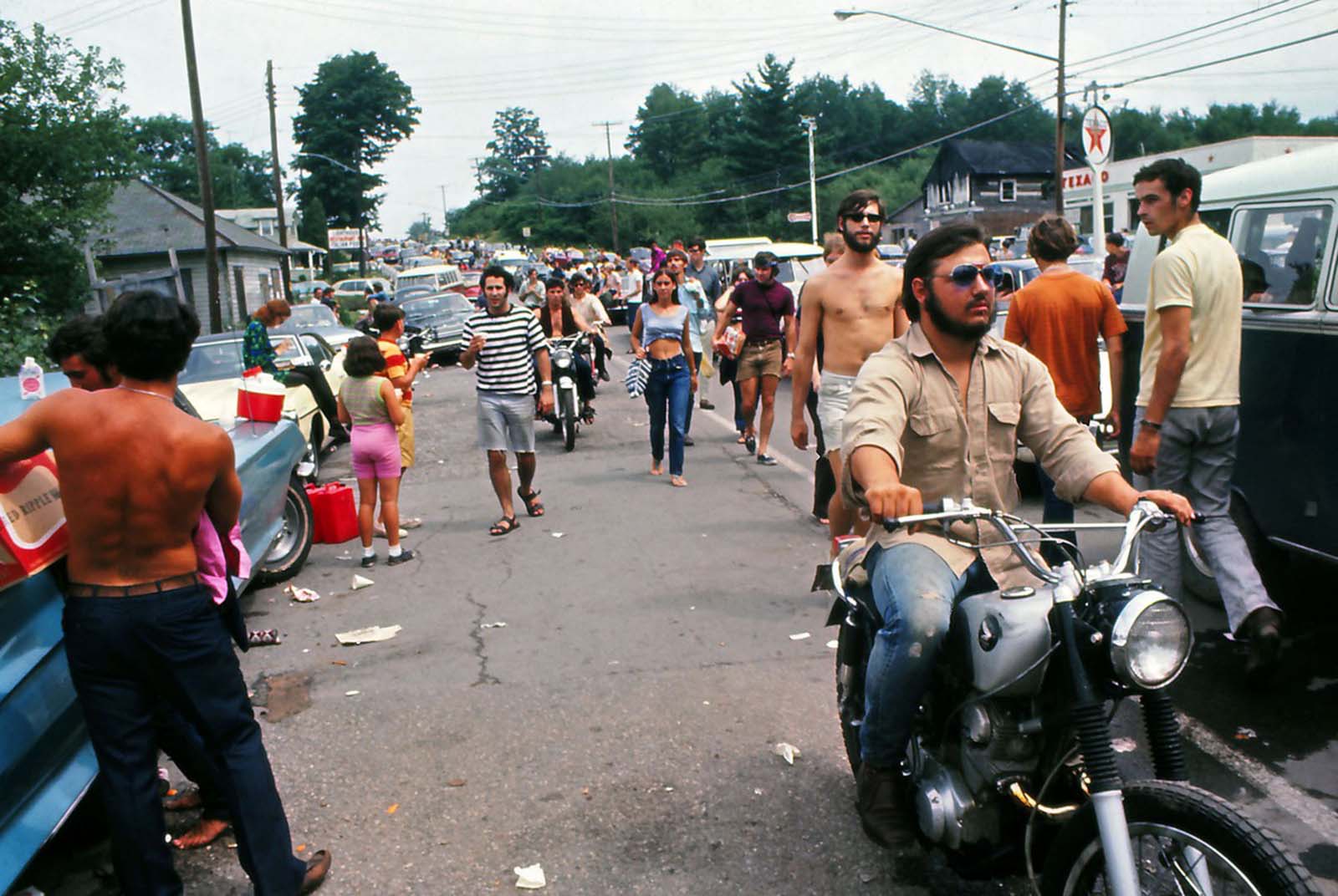
Young people on the road arrive at the Woodstock Music Festival on August 16, 1969.
Fencing, entrance gates, and ticket booths needed to be set up, and a performers’ pavilion, concession stands, bathroom facilities, and medical tents built.
But by the time people started arriving a couple of days ahead of the concert, the fencing, gates, and ticket booths still weren’t ready.
Originally, about 50,000 people were expected. But by August 13, at least that number were already camped out on location and over 100,000 tickets pre-sold.
As an estimated one million people descended on Woodstock, its organizers scrambled to add more facilities.
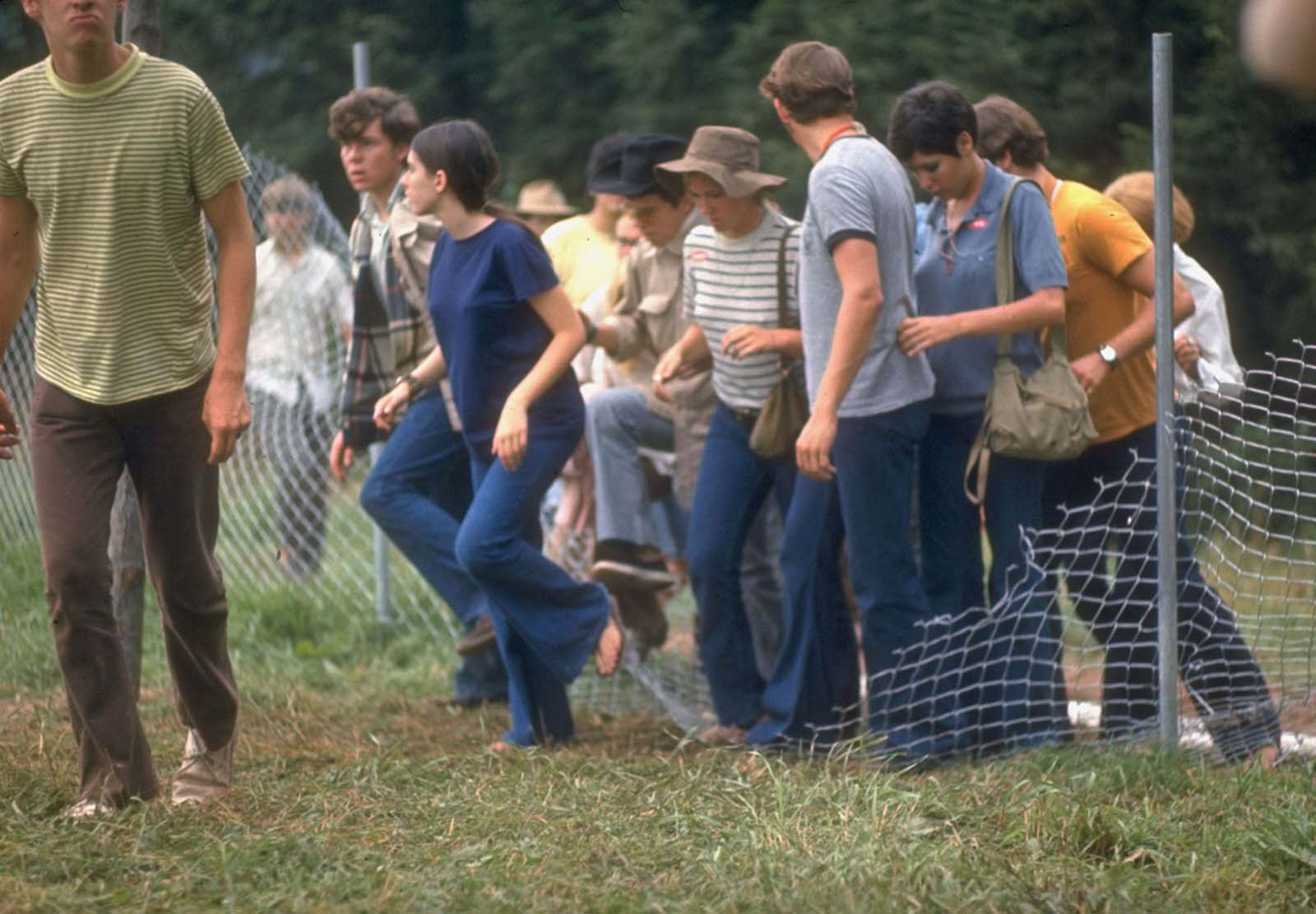
A group of people steps over a torn-down fence in order to enter the Woodstock grounds in August 1969.
Highways and local roads came to a standstill and many concert-goers simply abandoned their cars and trekked the rest of the way on foot. Eventually, about half a million people reached the venue.
The Woodstock audience was diverse and a reflection of the rapidly-changing times. Some were hippies who felt alienated by a society steeped in materialism.
In 1969, the country was deep into the controversial Vietnam War, a conflict that many young people vehemently opposed.
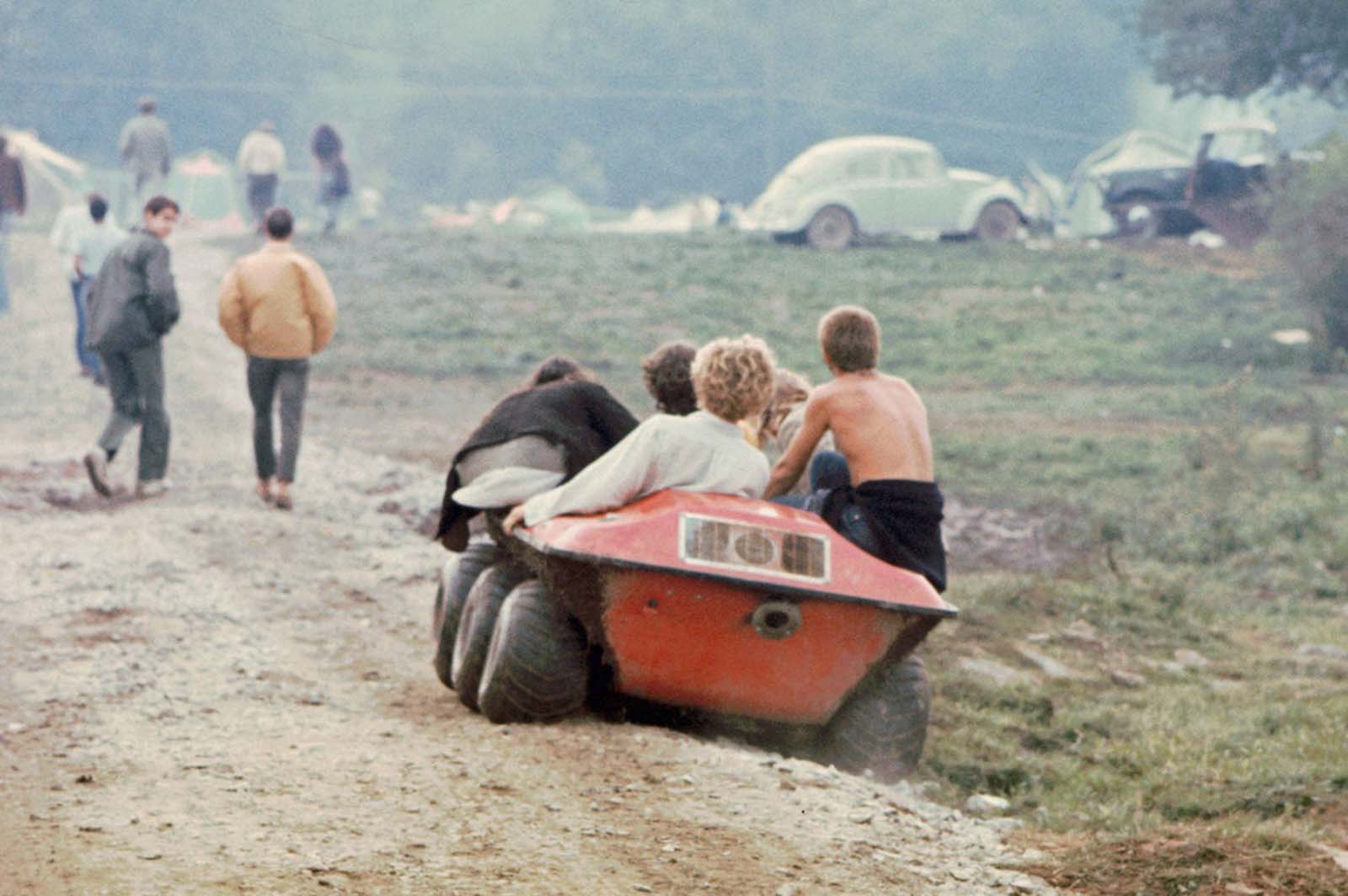
A red six-wheeler drives down the side of a dirt road to the camping area.
It was also the era of the civil rights movement, a period of great unrest and protest.
Woodstock was an opportunity for people to escape into music and spread a message of unity and peace.
Although the crowd at Woodstock experienced bad weather, muddy conditions, and a lack of food, water, and adequate sanitation, the overall vibe there was harmonious.
Looking back, some people attribute the lack of violence to the large number of psychedelic drugs being used.

A woman named Psylvia dances in the midst of the crowd.
Others believe hippies were simply living out their mantra of “making love, not war.”
In fact, more than a few couples at Woodstock took that command literally and made love whenever and wherever the mood hit.
Over three days, 32 acts performed on stage, including Joan Baez, Santana, the Grateful Dead, Creedence Clearwater Revival, Janis Joplin, Sly, and the Family Stone, The Who, Jefferson Airplane, The Band, Crosby, Stills, Nash & Young, and Jimi Hendrix.
Woodstock officially ended on Monday, August 18, after Hendrix left the stage.
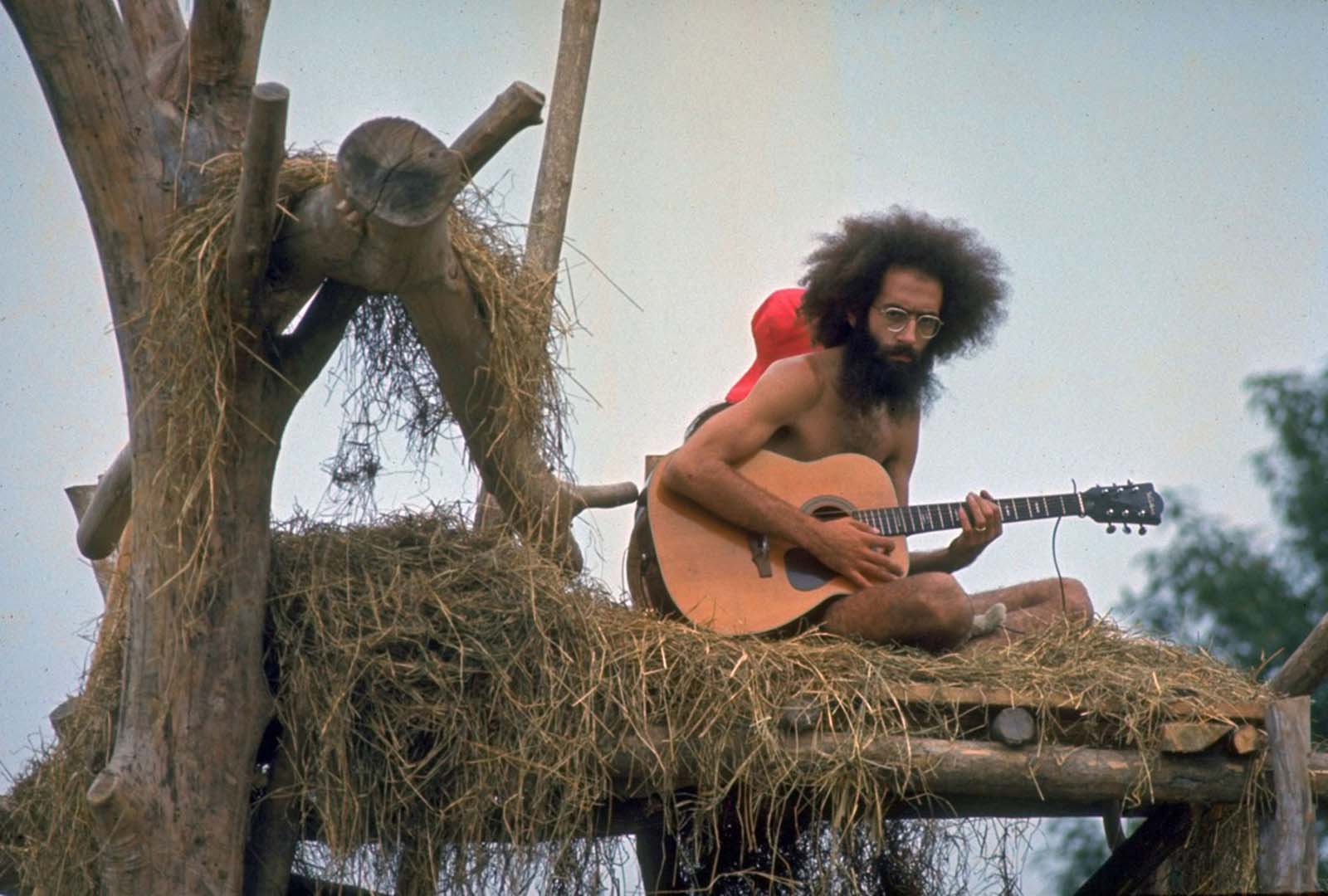
A man sits atop a treehouse-like platform playing the guitar, during Woodstock.
Leaving Woodstock wasn’t much easier than getting there. Roads and highways quickly became jammed again as festival-goers made their way home.
Cleaning up the venue was a mammoth task and required several days, many bulldozers, and tens of thousands of dollars.
Woodstock is perhaps best described by Max Yasgur, the humble farmer who lent his land for the occasion.
Addressing the audience on day three he said, “…You’ve proven something to the world…the important thing that you’ve proven to the world is that a half a million kids, and I call you kids because I have children who are older than you are, a half a million young people can get together and have three days of fun and music and have nothing but fun and music and God bless you for it!”.

Young men and women skinny-dip in a river during Woodstock.
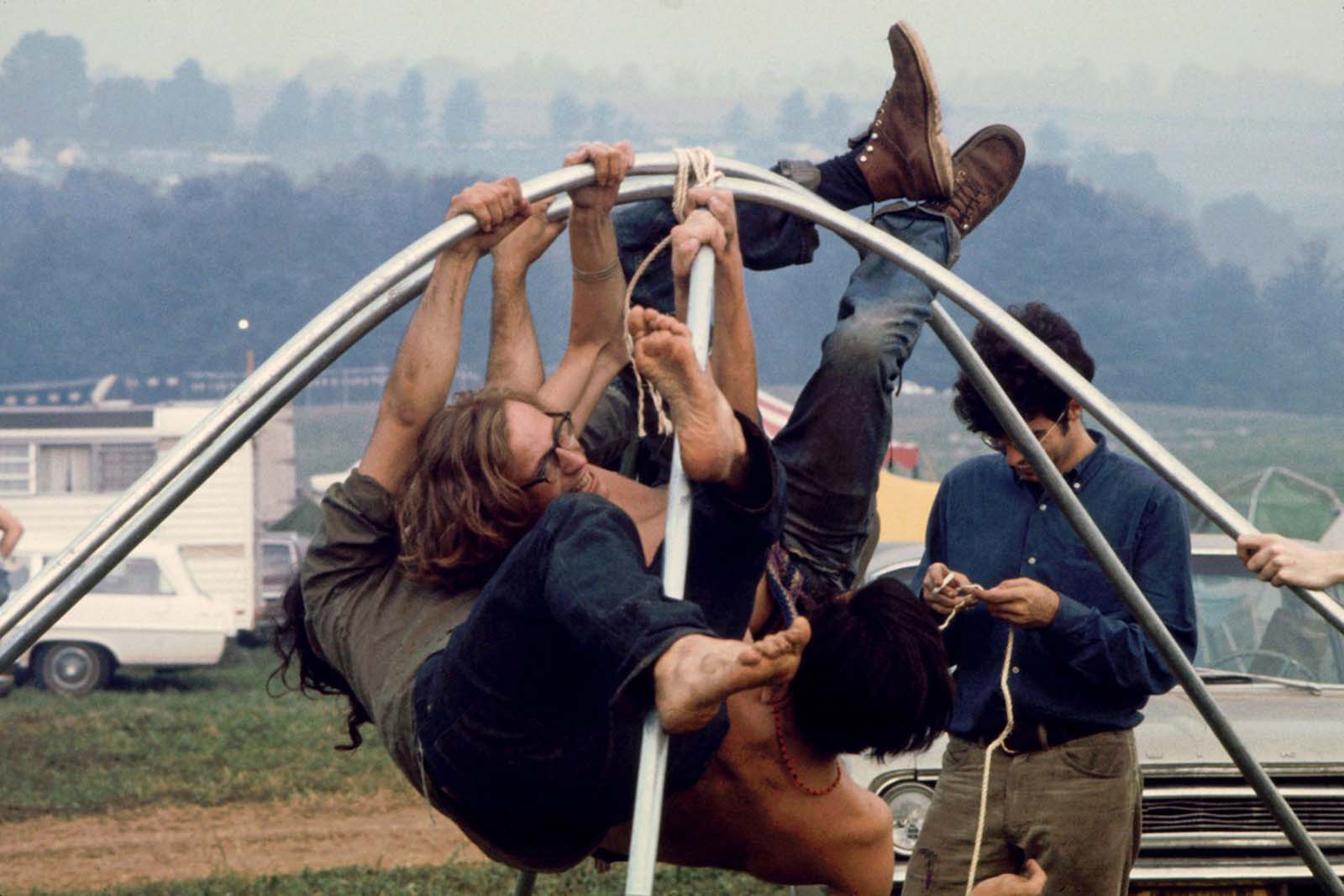
Festivalgoers hang from bent metal tubing as another untangles rope to tie the tubes together to form a tent frame on the grounds of the Woodstock Festival in August 1969.
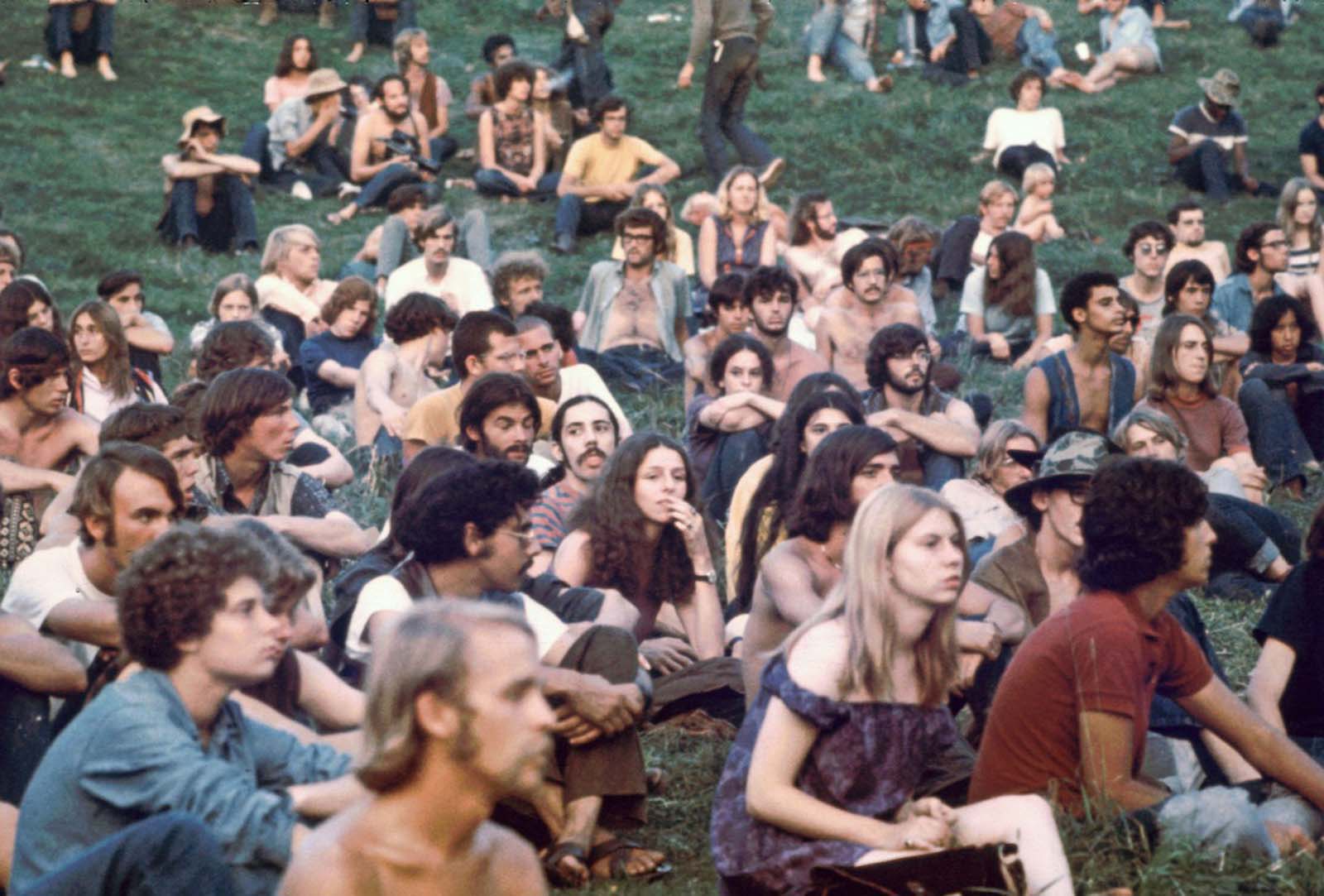
Audience members watch a performance at the Woodstock Music & Art Fair.
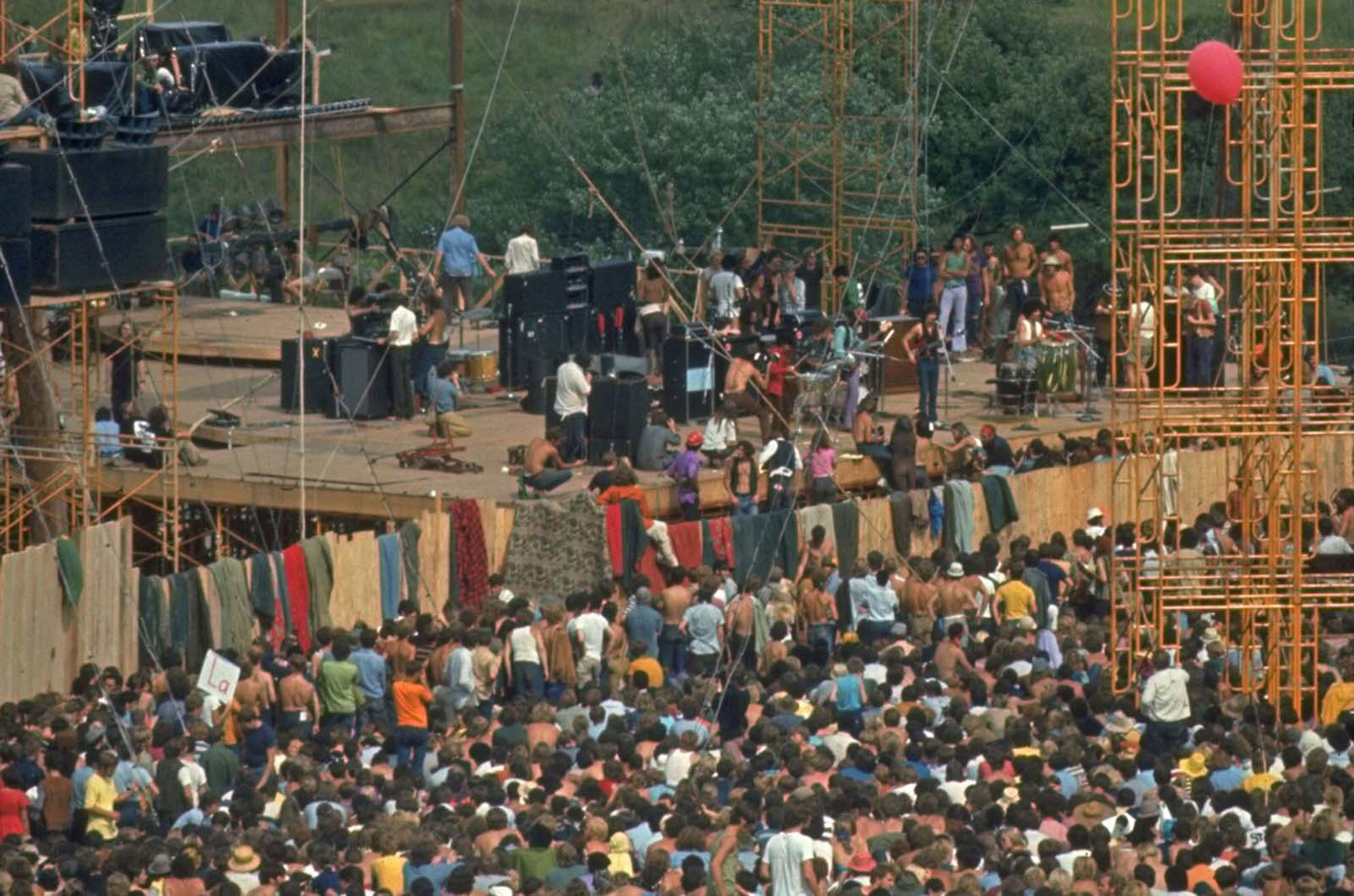
The crowd looks toward the stage during a performance by the band Santana.
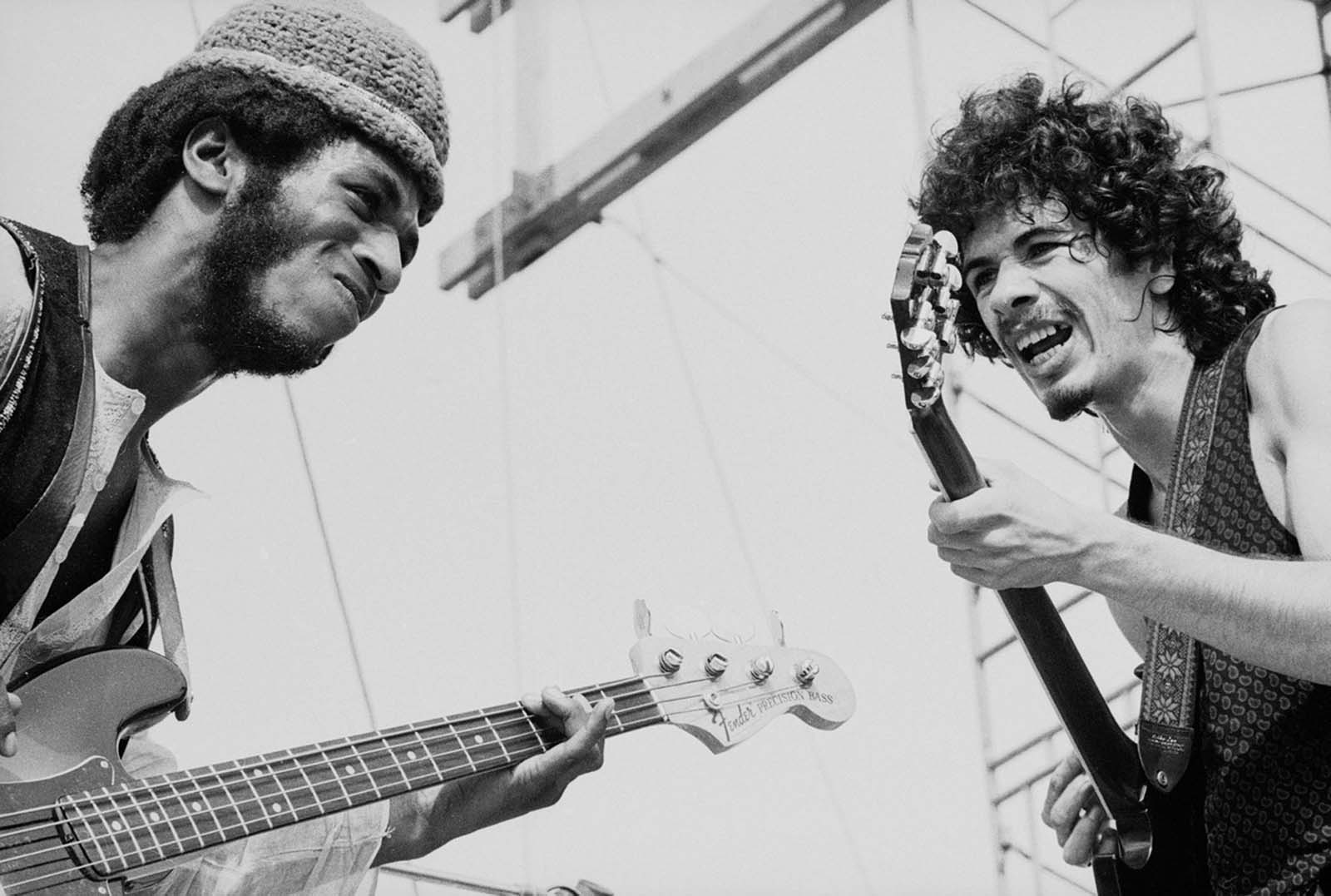
The musician Carlos Santana (right) and the bassist David Brown perform with the other members of Santana at Woodstock on August 16, 1969.
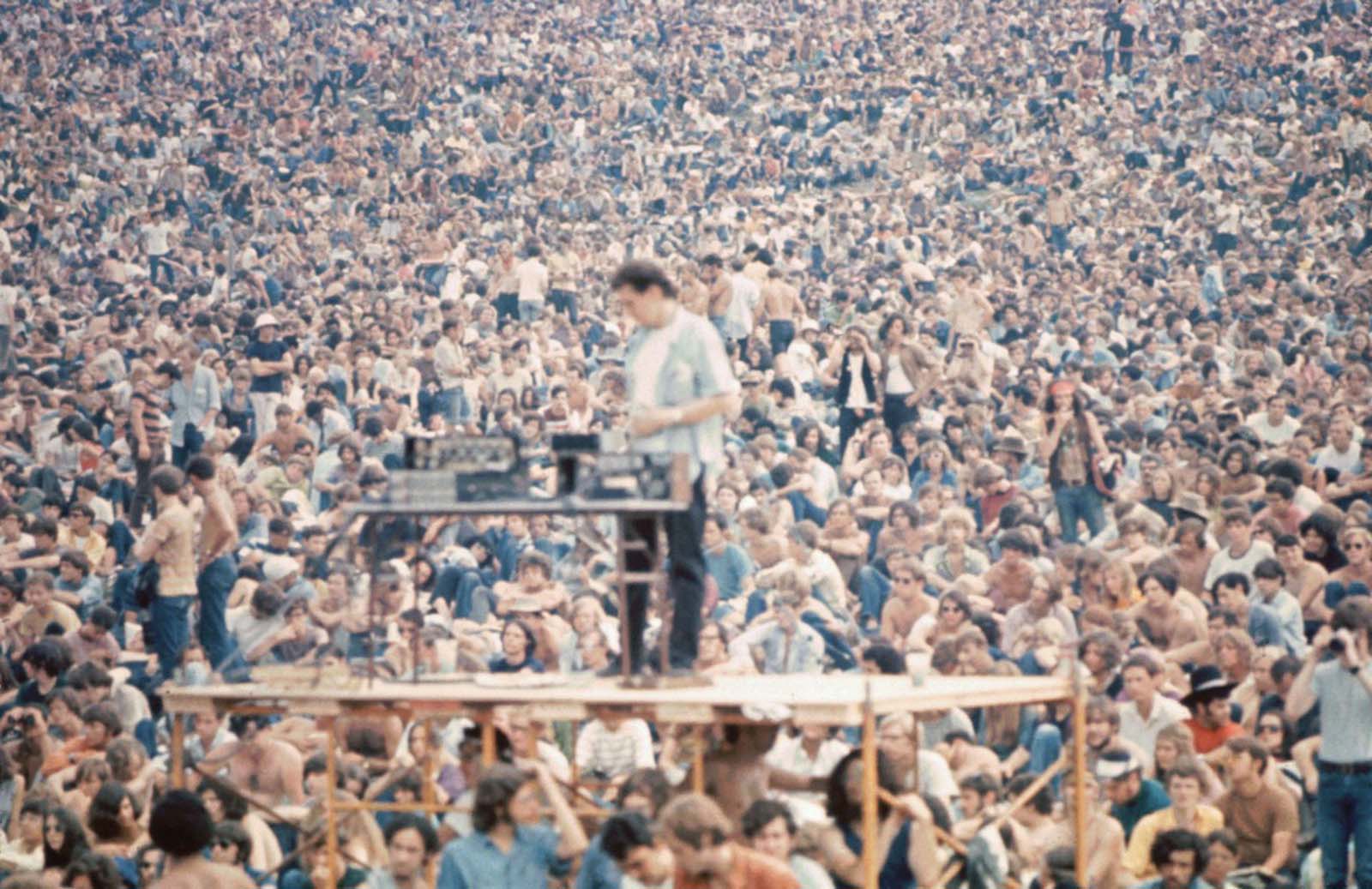
A sound man stands on scaffolding with his equipment in front of the Woodstock crowd.
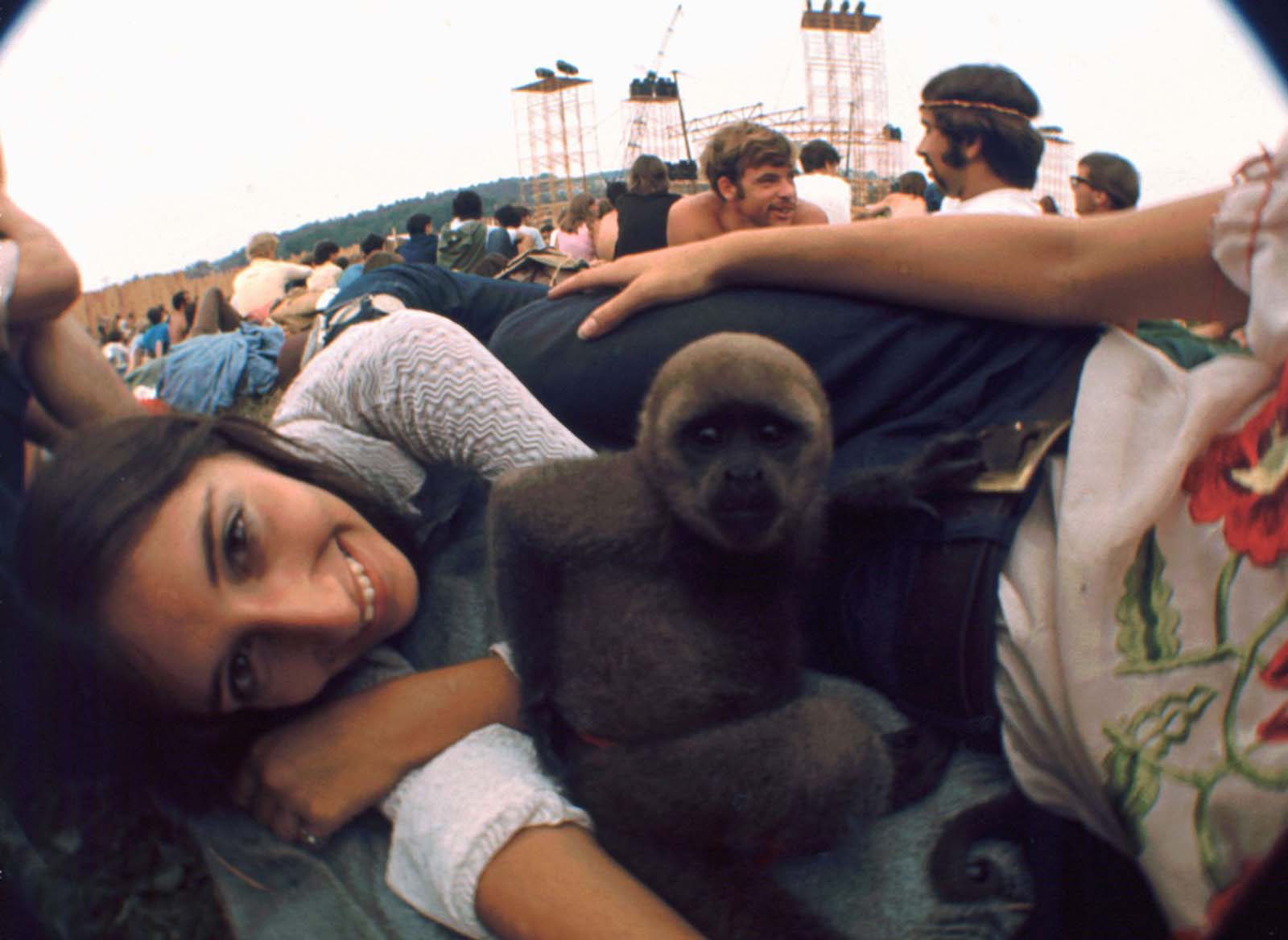
An unidentified woman smiles while her pet monkey sits in the middle of her group.
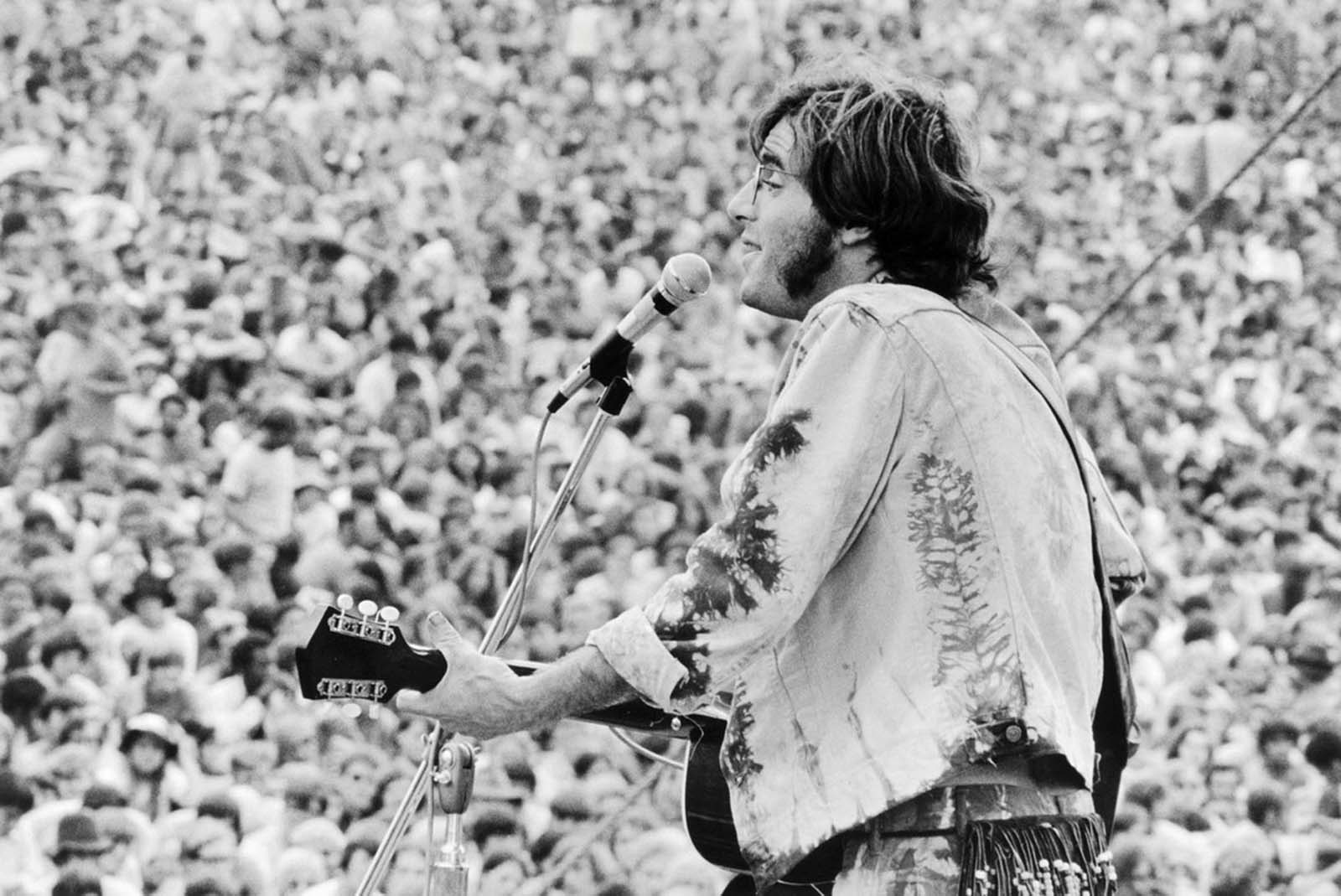
John Sebastian performs at the Woodstock Music & Art Fair in August 1969.
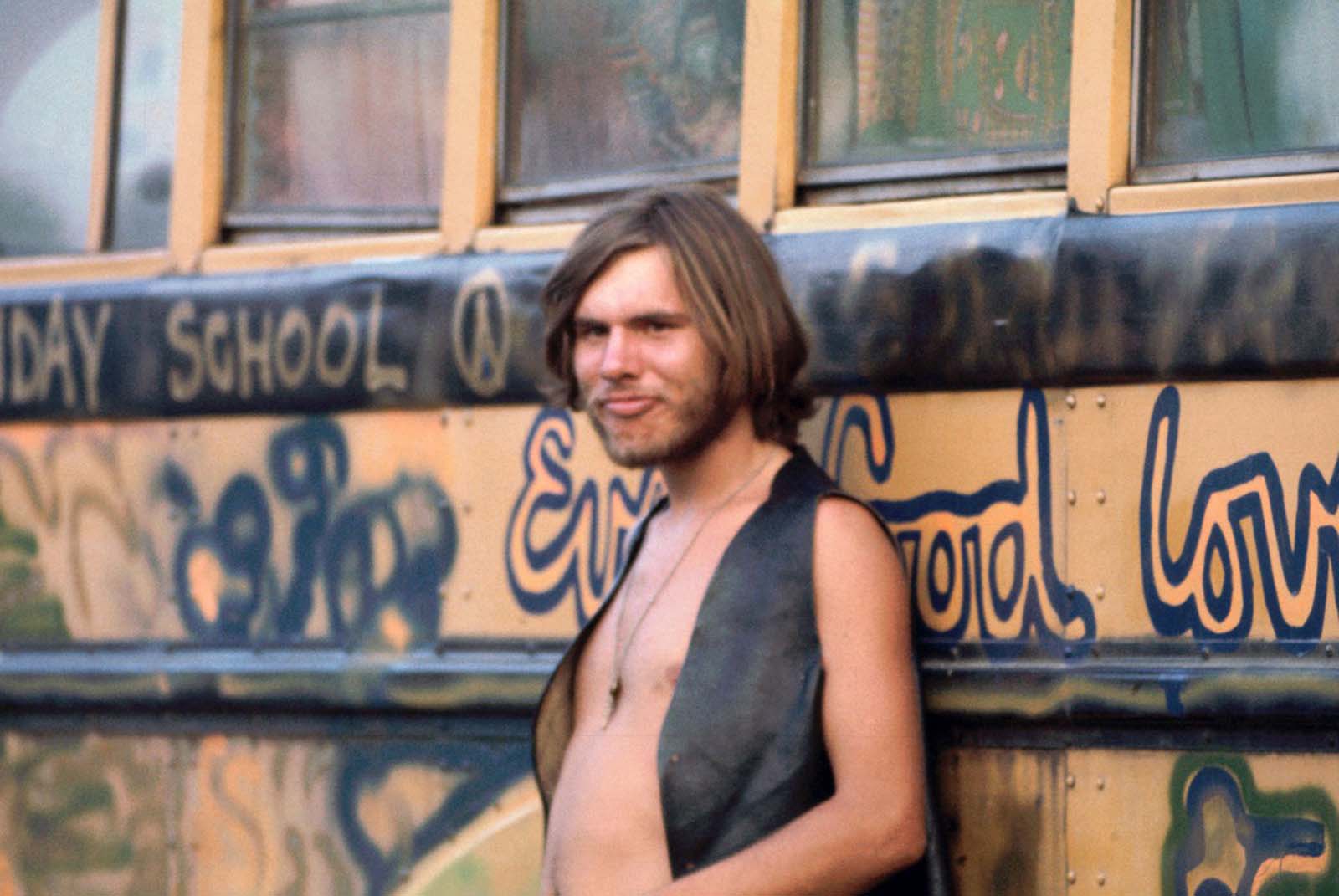
Near the “Free Stage” at the Woodstock Music & Arts Fair, a shirtless young man in a leather vest makes a face as he leans against a decorated school bus used by the Hog Farmers, a group who had been asked to help construct, ensure security, and provide food for the event.
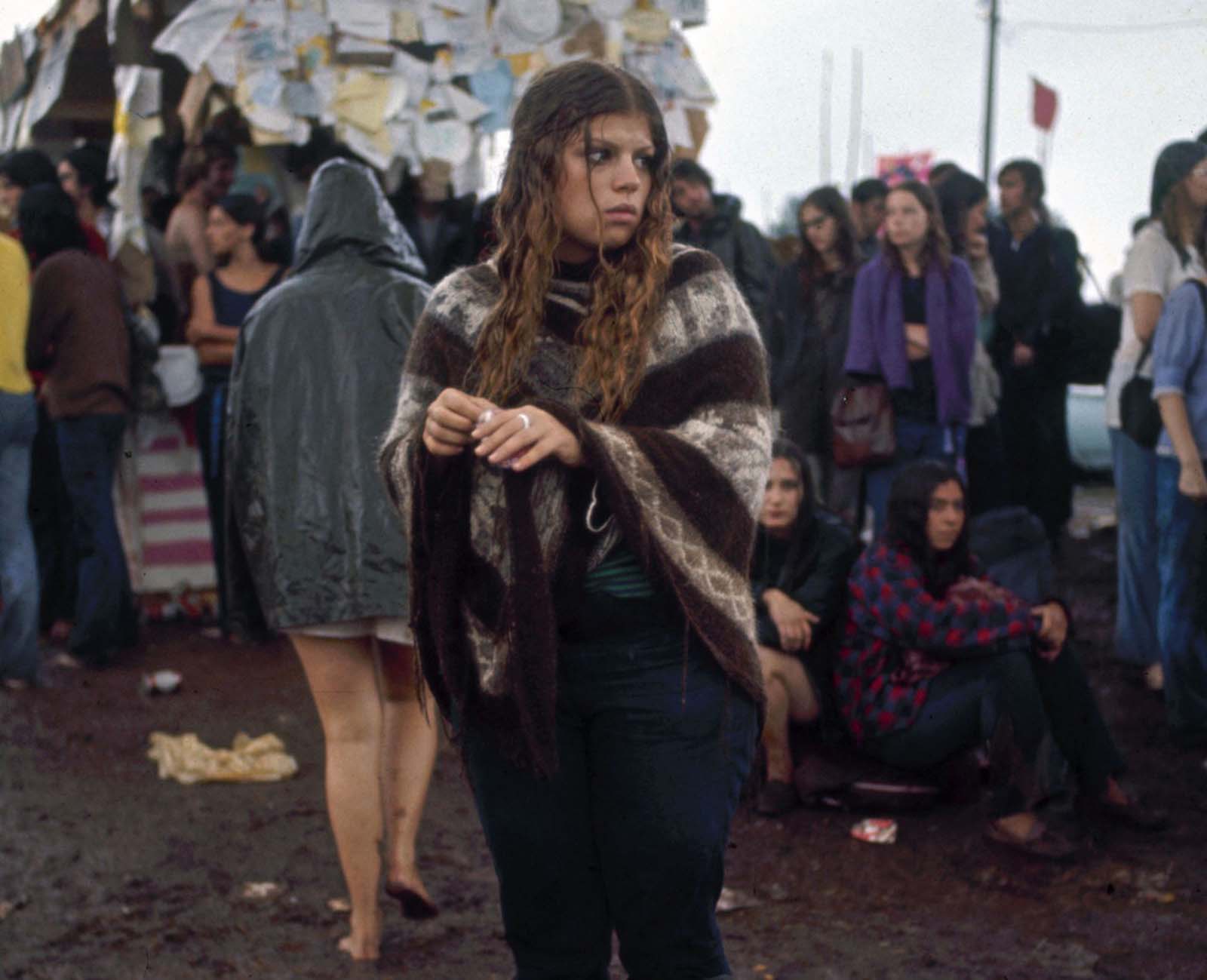
A bedraggled young woman stands in the mud on the grounds of the Woodstock Music & Art Fair.
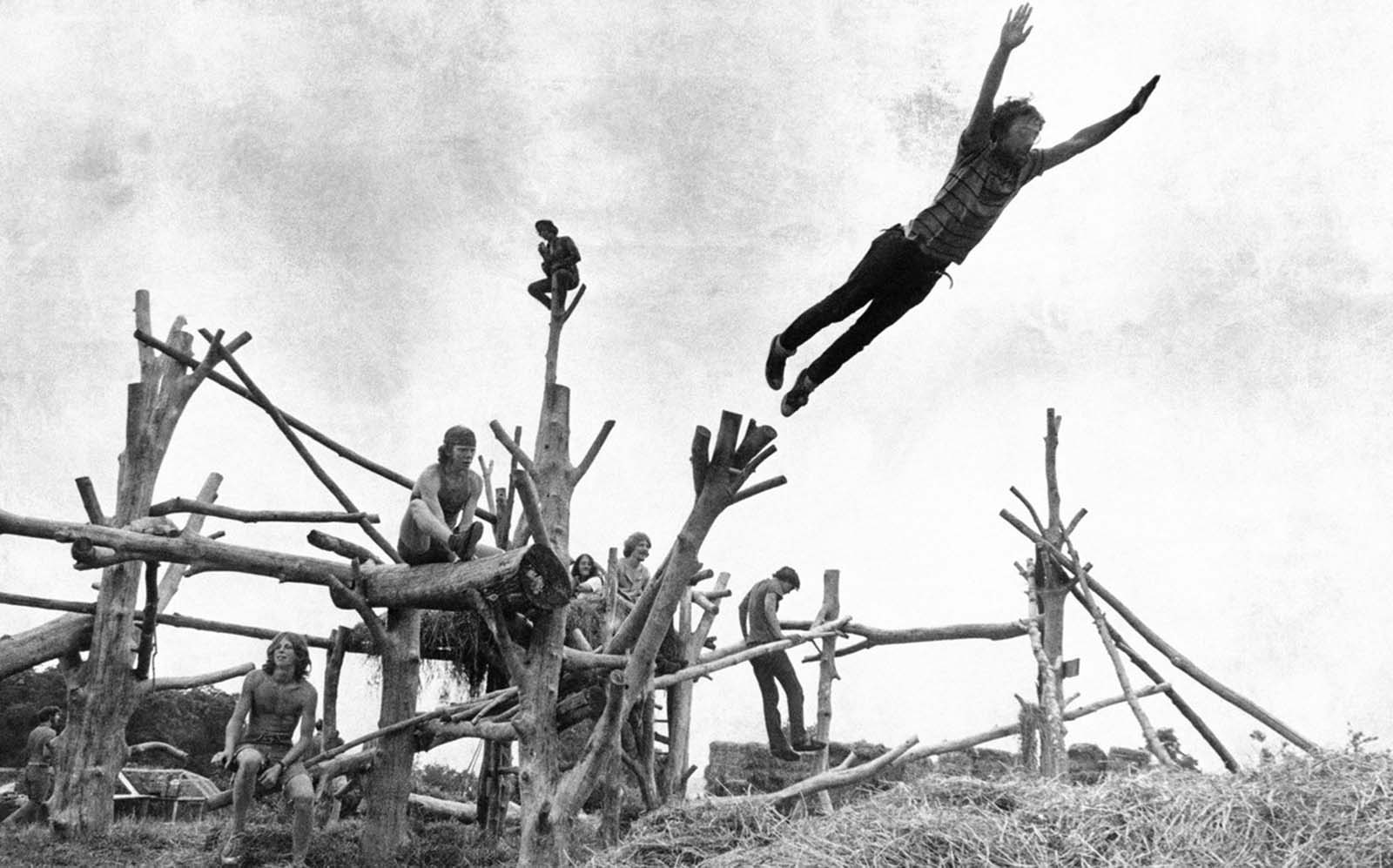
Rock-music fans sit on a tree sculpture as one leaps midair onto a pile of hay during Woodstock on August 15, 1969.
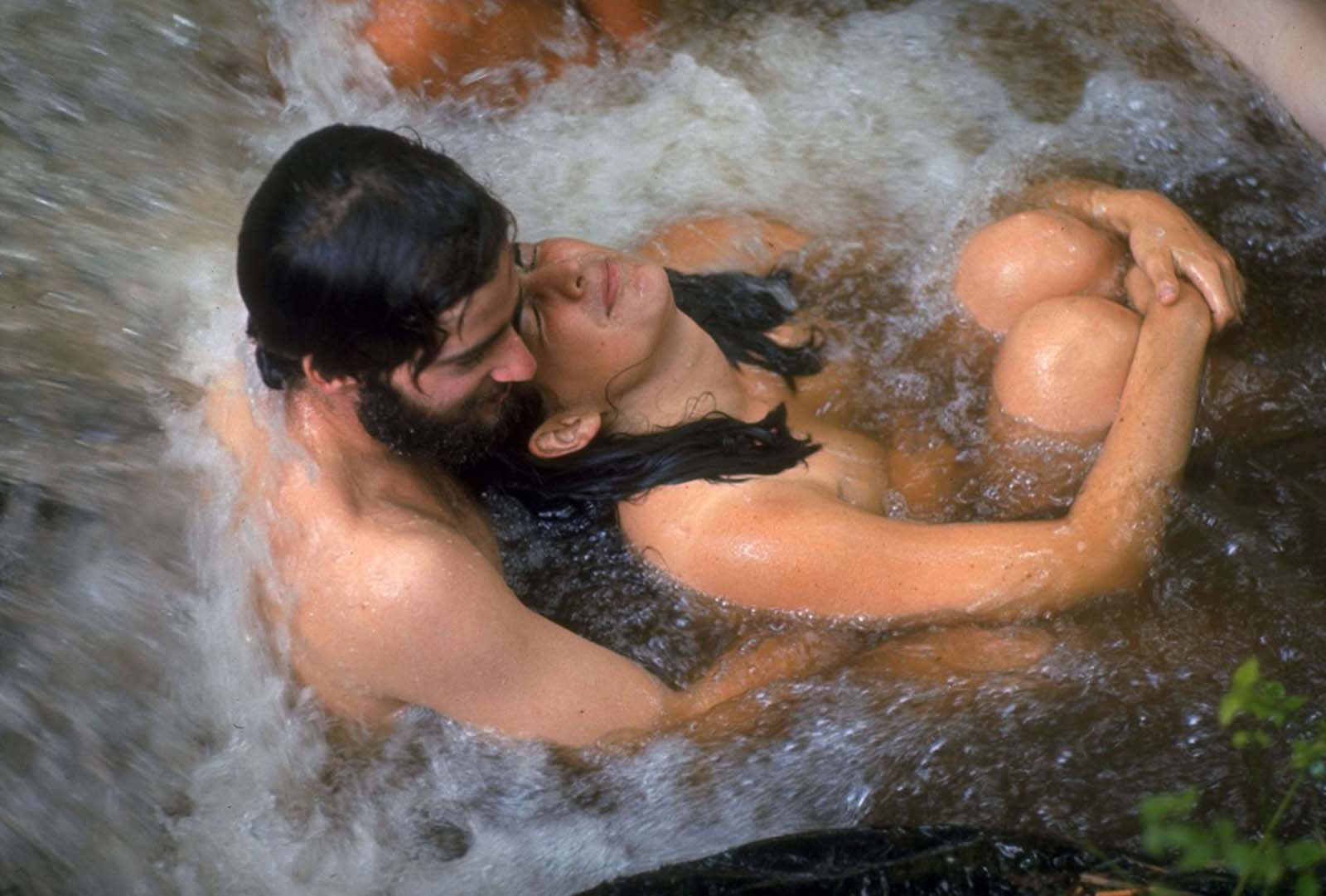
A naked couple embraces as a river rushes around them while at Woodstock.

An unidentified shirtless man sleeps stretched across the trunks of two parked cars at the Woodstock Music & Art Fair.
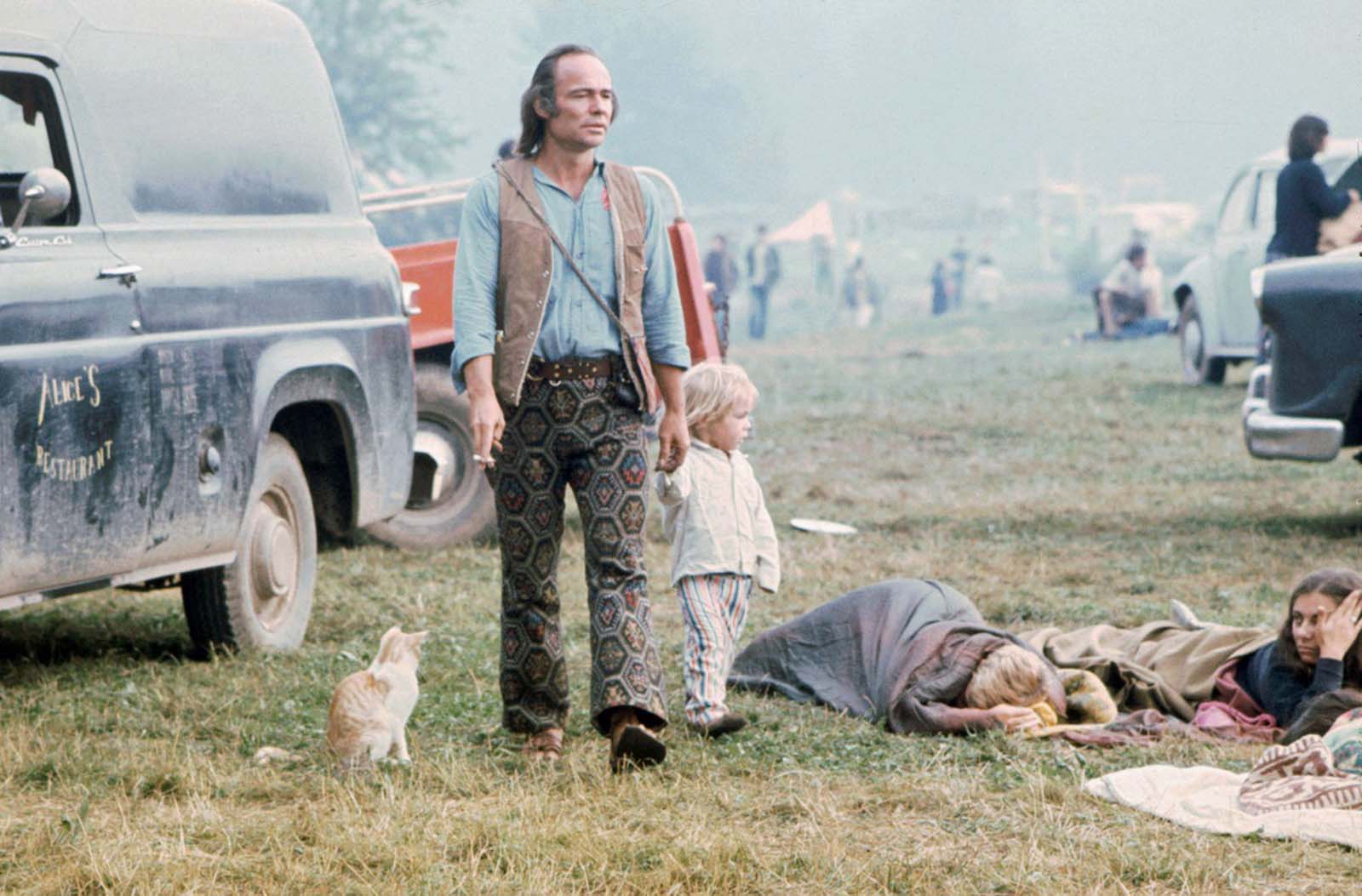
A man and a child walk past people in sleeping bags in August 1969.
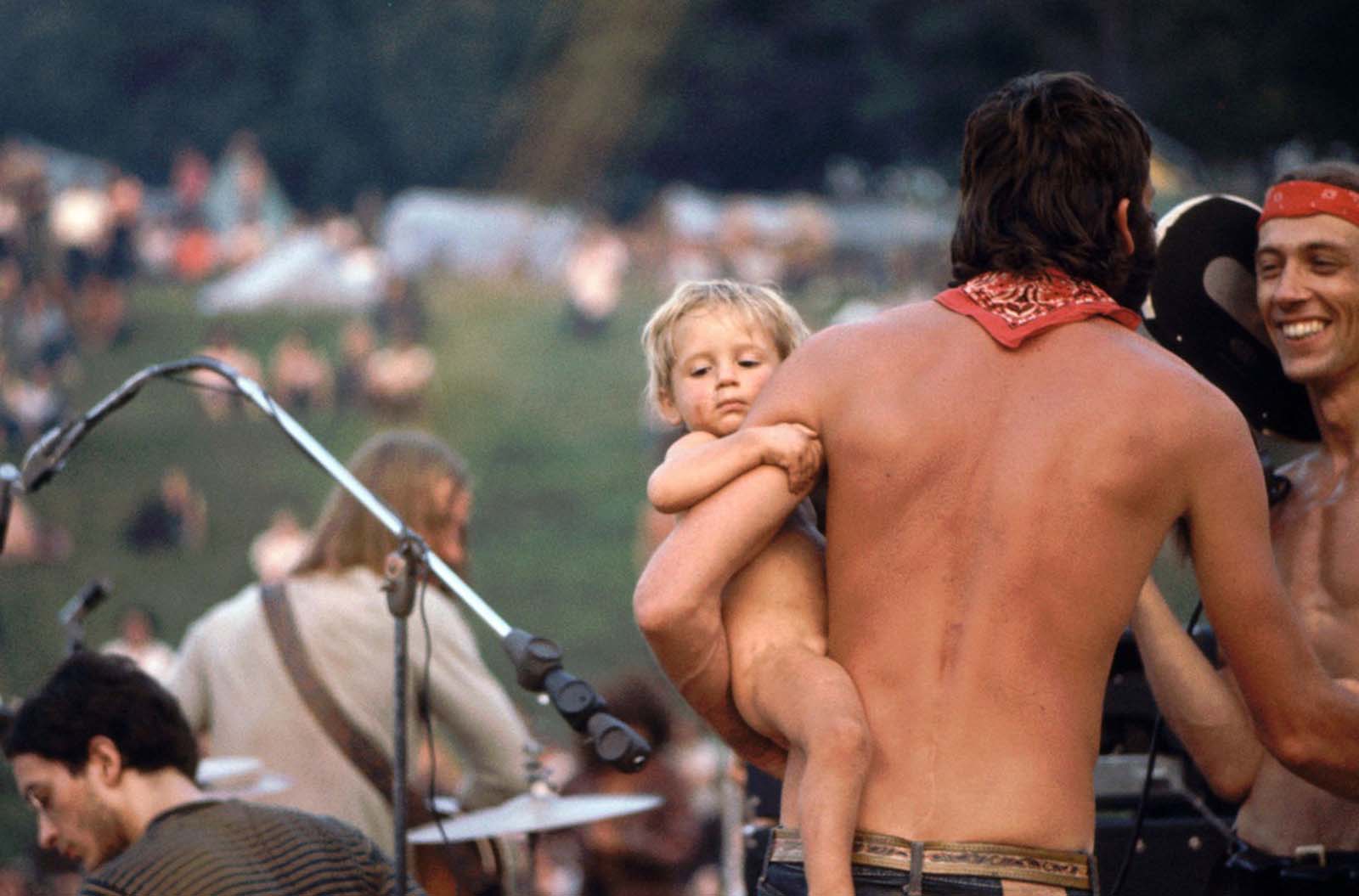
Ken Babbs, one of the Merry Pranksters, talks with a filmmaker at Woodstock’s Free Stage.
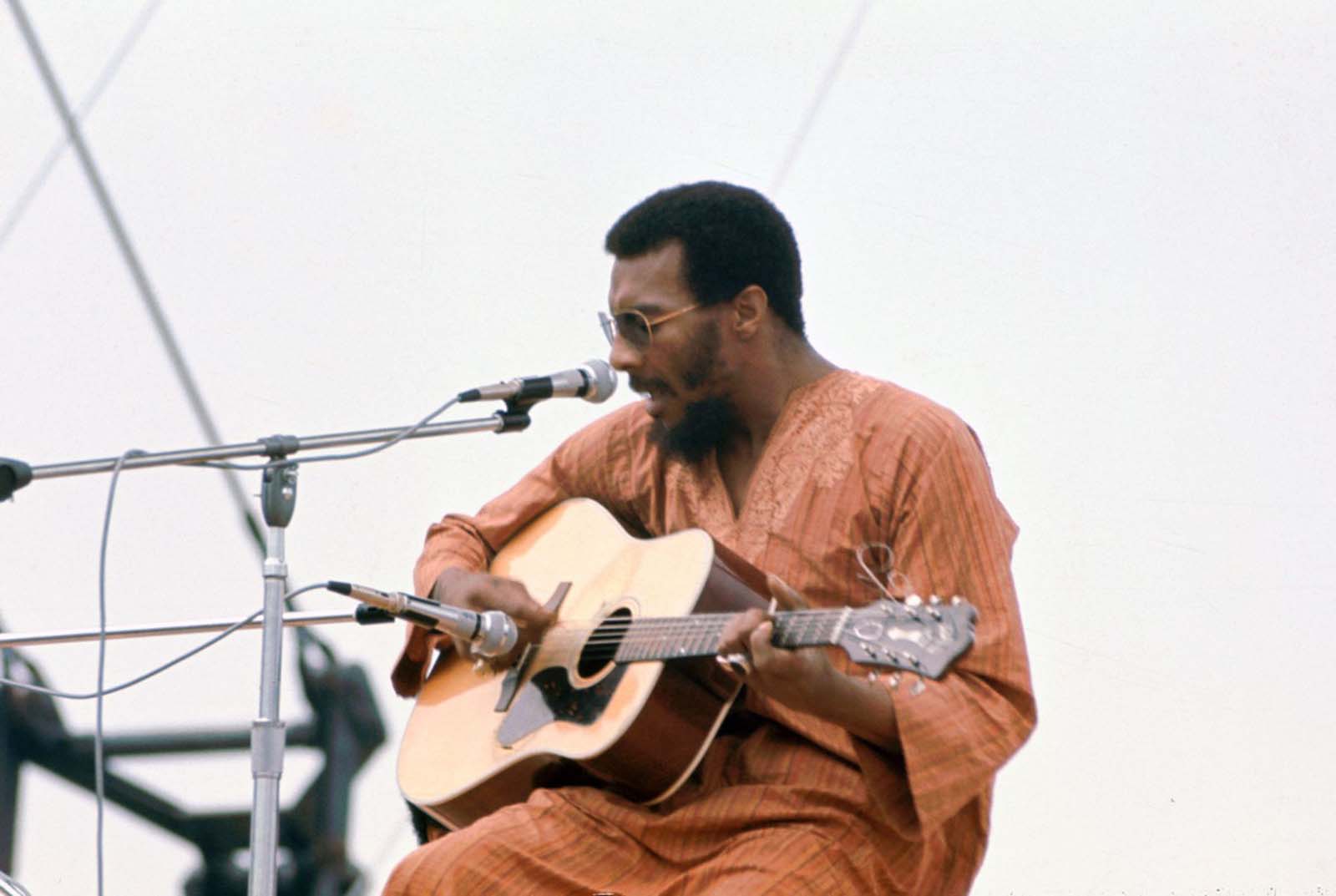
The musician Richie Havens performs onstage at the Woodstock Music & Art Fair on August 15, 1969.

A long-exposure photo of the huge nighttime crowd.

The stage is lit up during a performance at the Woodstock Music & Art Fair.
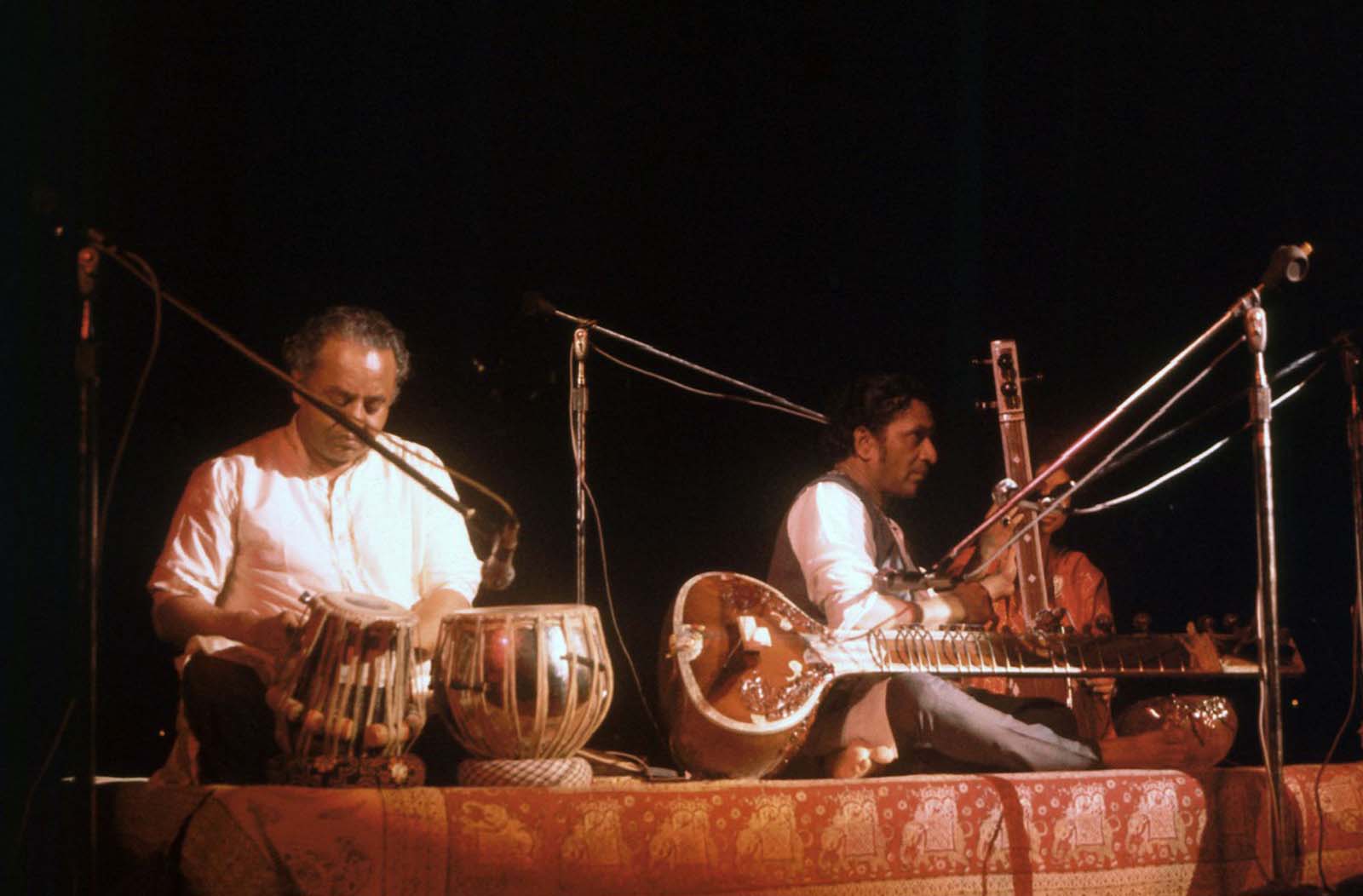
The Indian musicians Ravi Shankar and Alla Rakha (left) perform onstage on August 15, 1969.

Several young people dish out food to others in a food line, during the Woodstock Music & Art Fair.
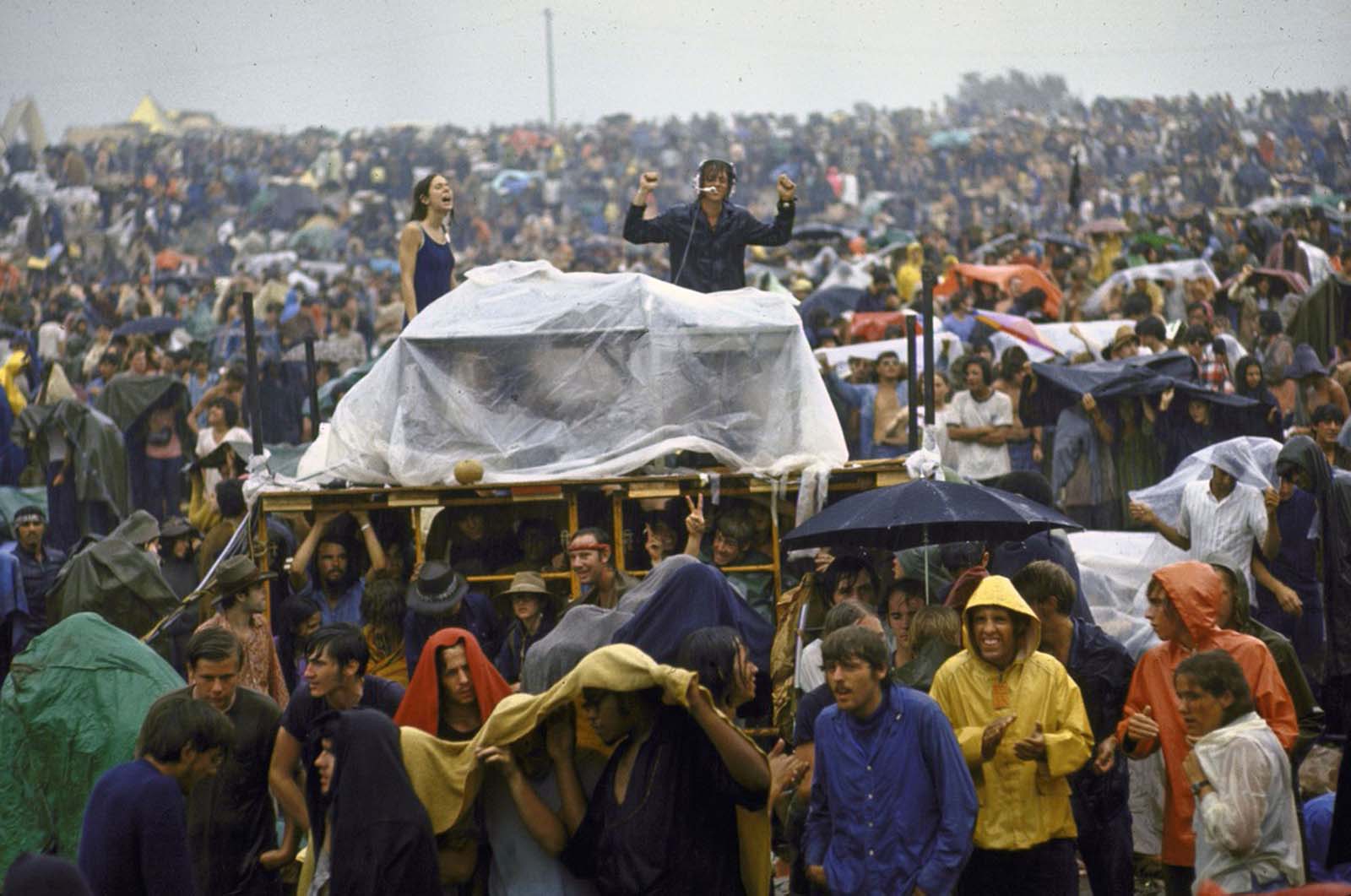
Halsey Clifton (right) stands on the sound-mixing table in the rain with a huge crowd around.

A woman runs through the mud at Woodstock on August 17, 1969.
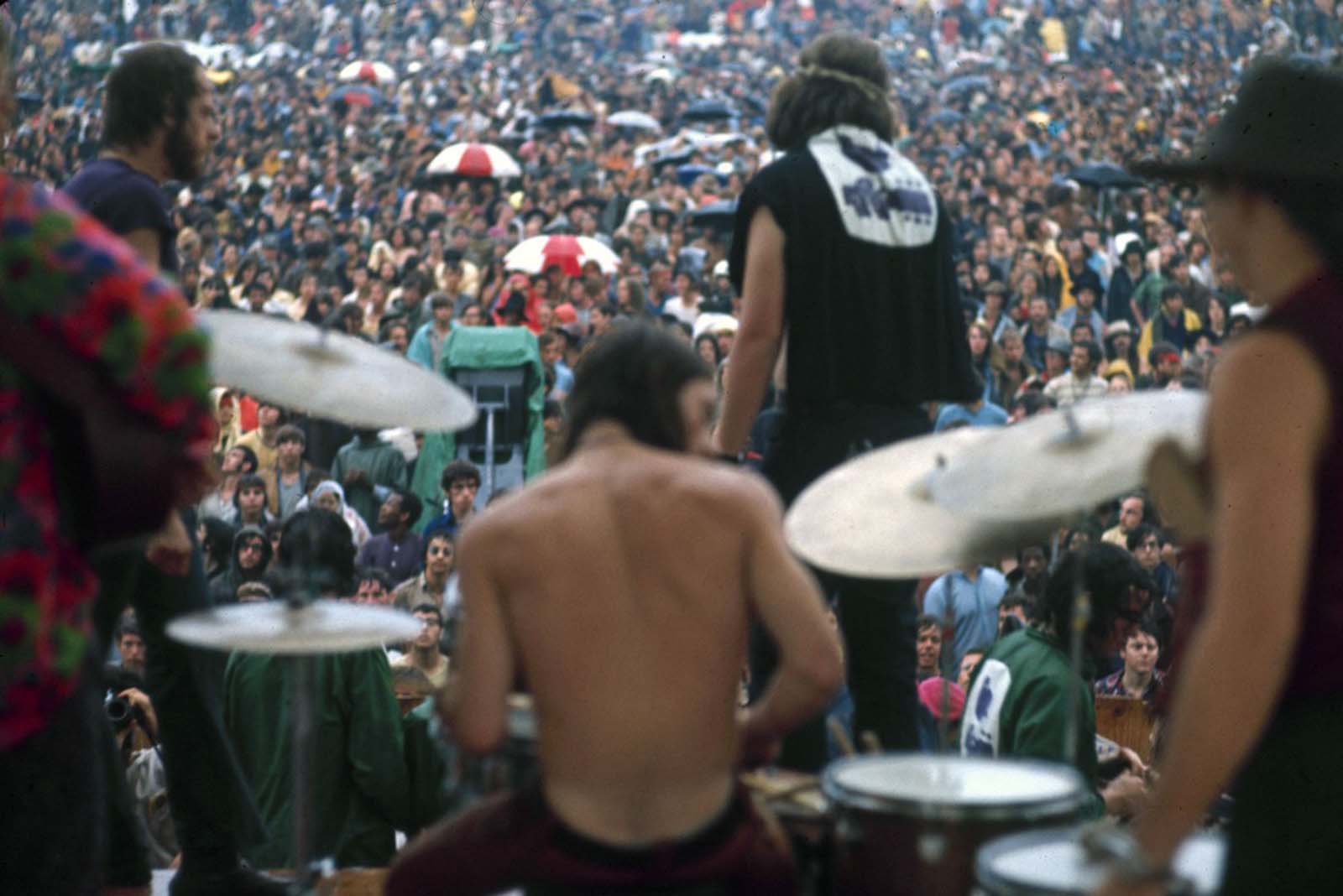
A view from the back of the stage as the rock group Country Joe and the Fish perform in the rain on August 17, 1969.
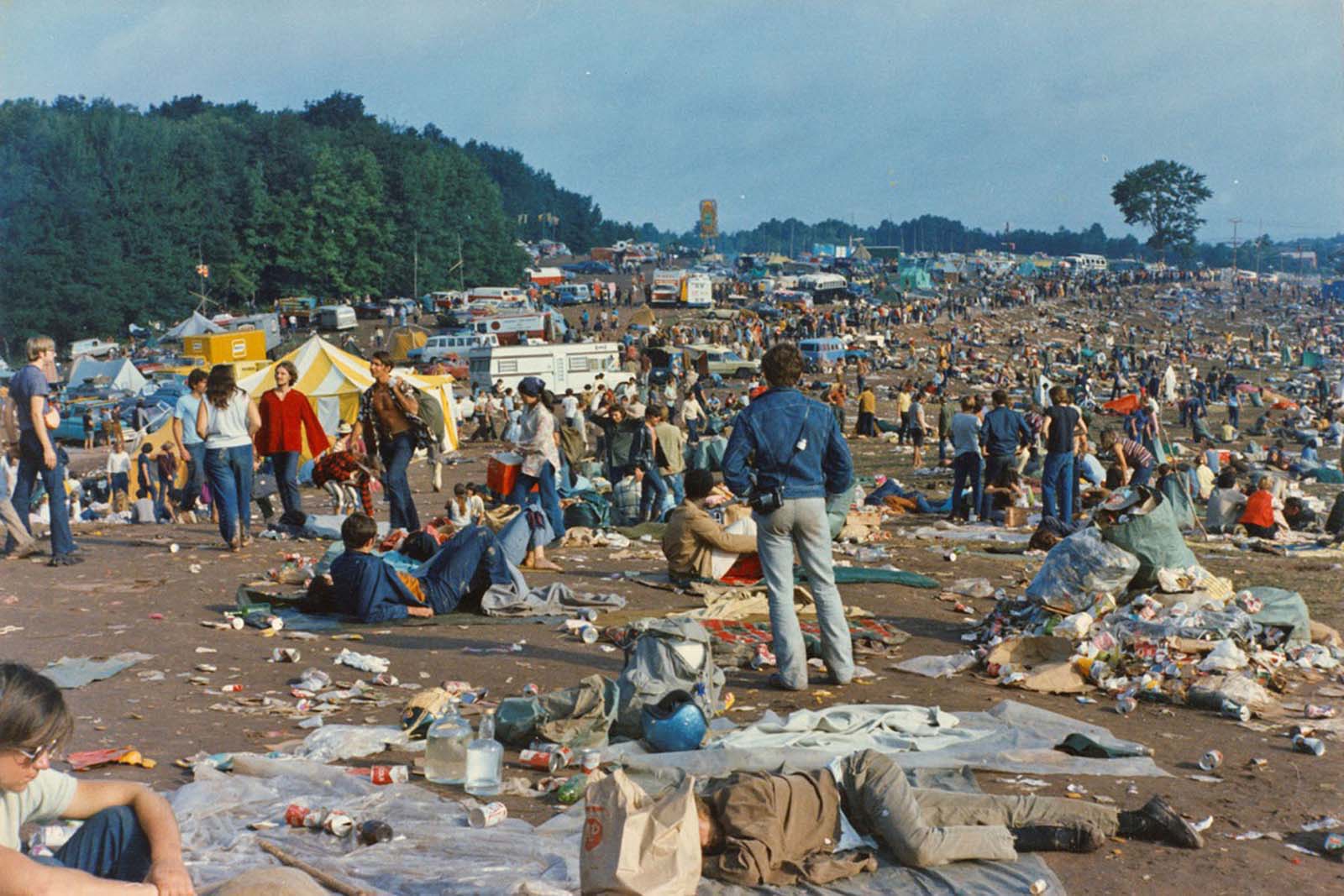
Attendees mill about the grounds of the Woodstock Music & Art Fair.
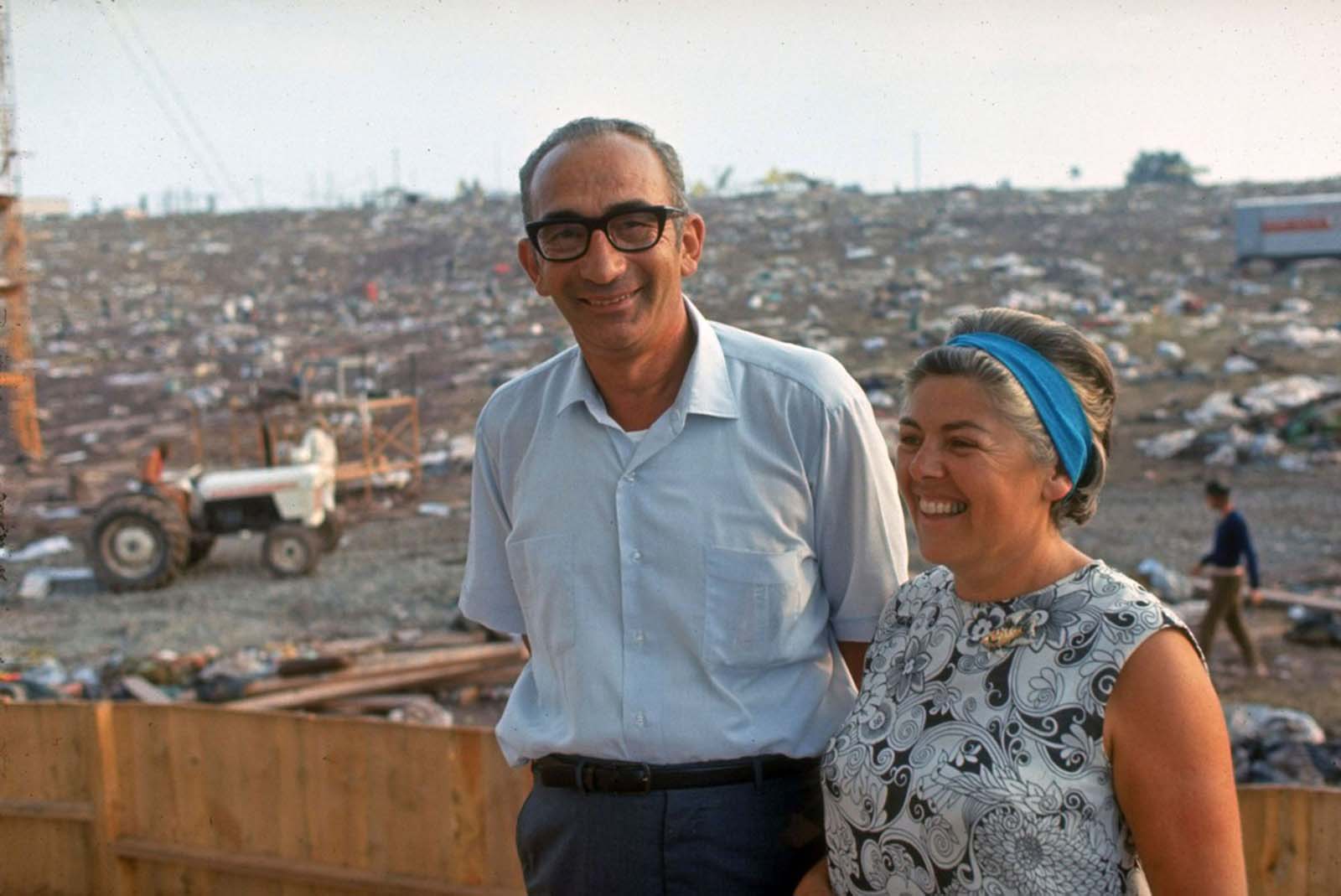
Max and Miriam Yasgur, photographed in front of the trash remaining on their dairy farm, after the Woodstock Music & Art Fair.
(Photo credit: The LIFE Picture Collection / Getty / Wikimedia Commons).
